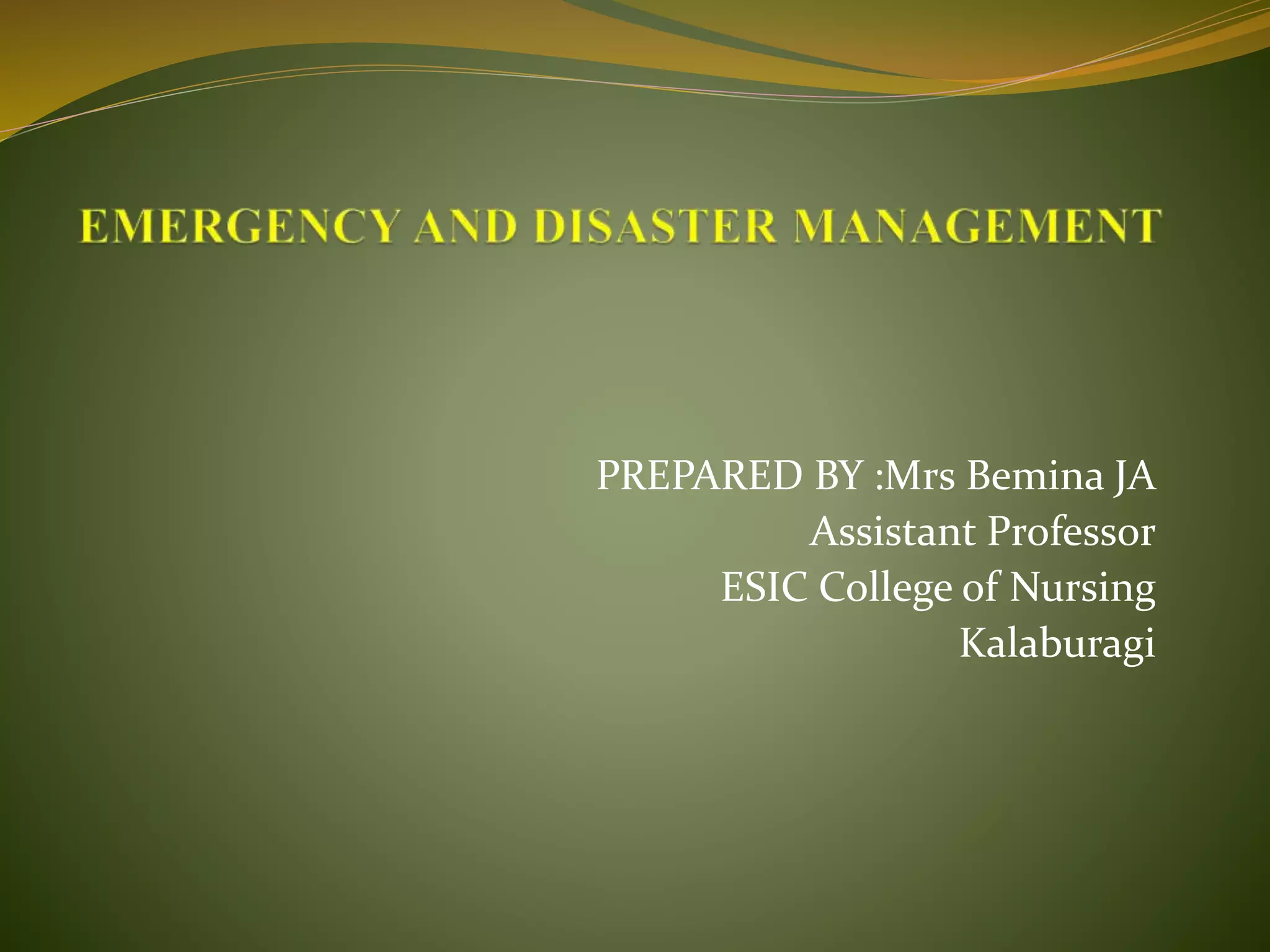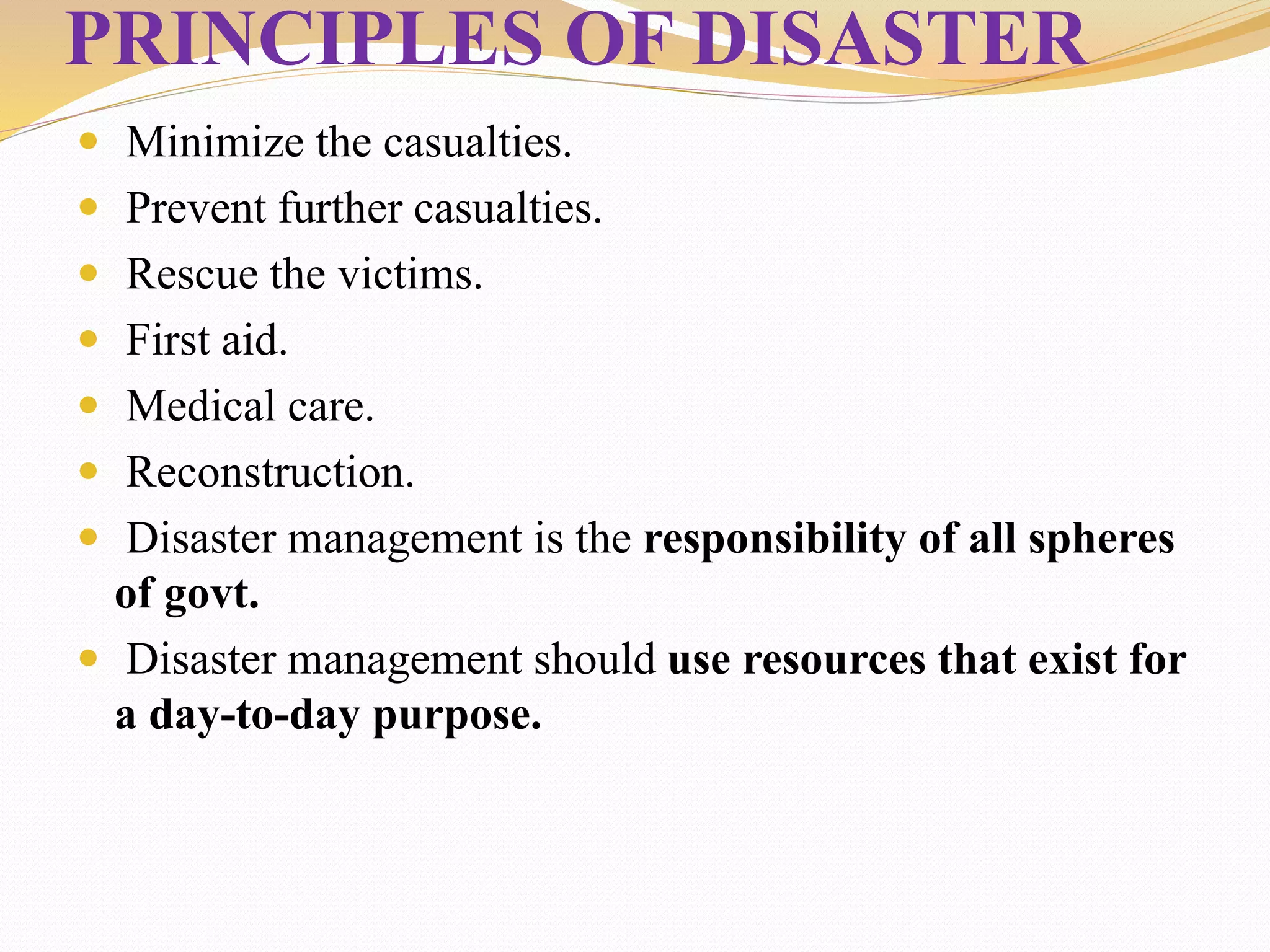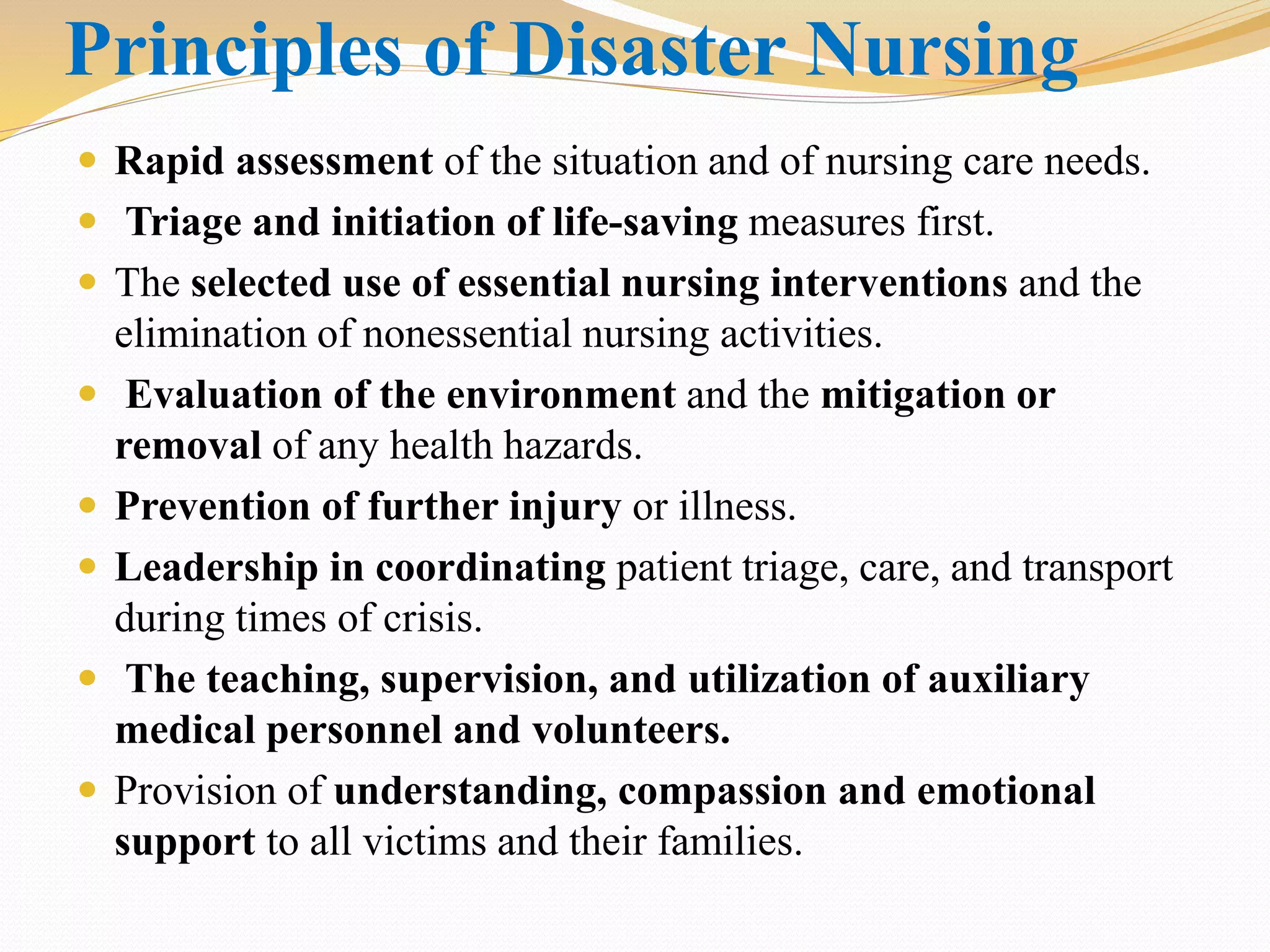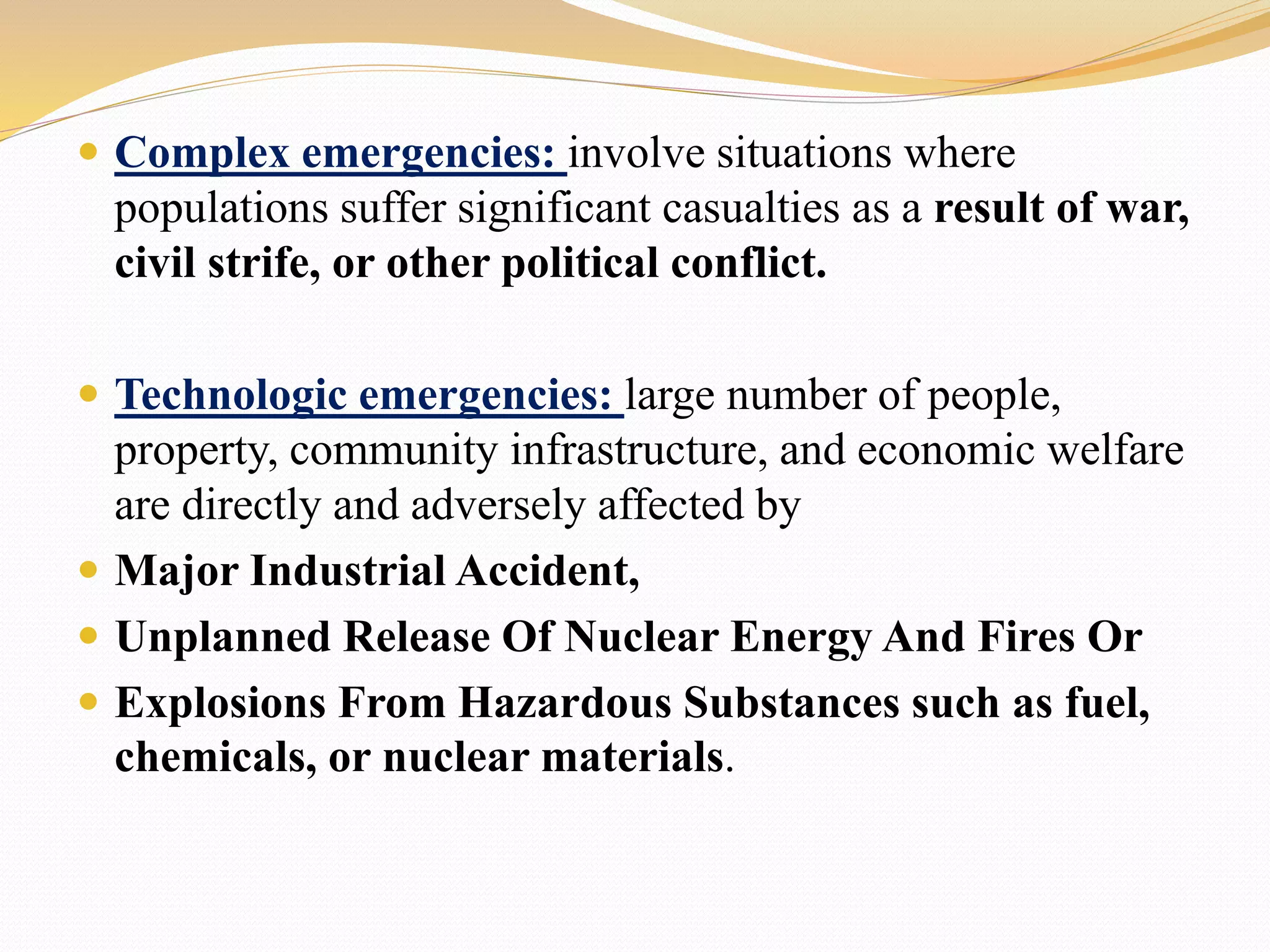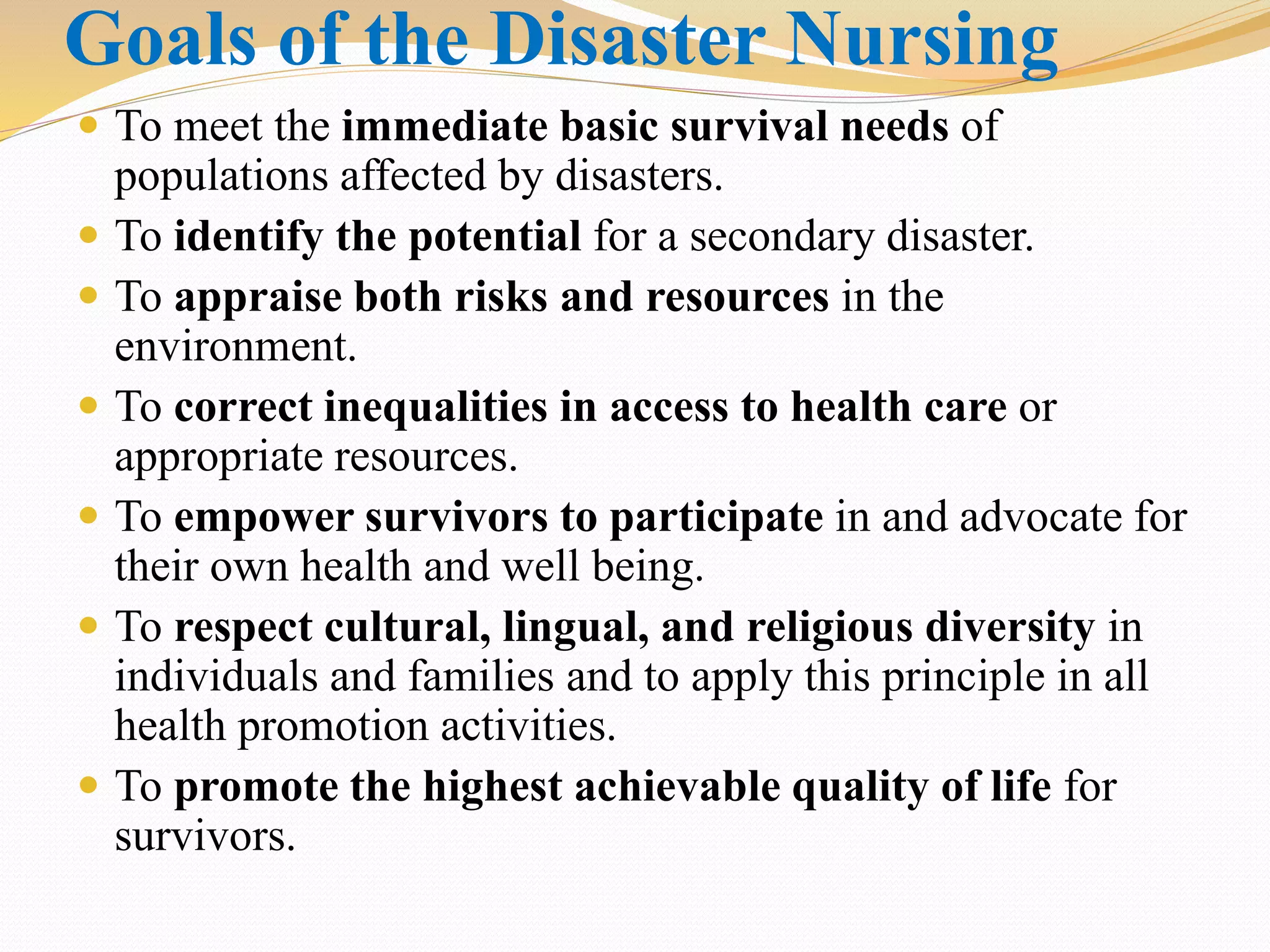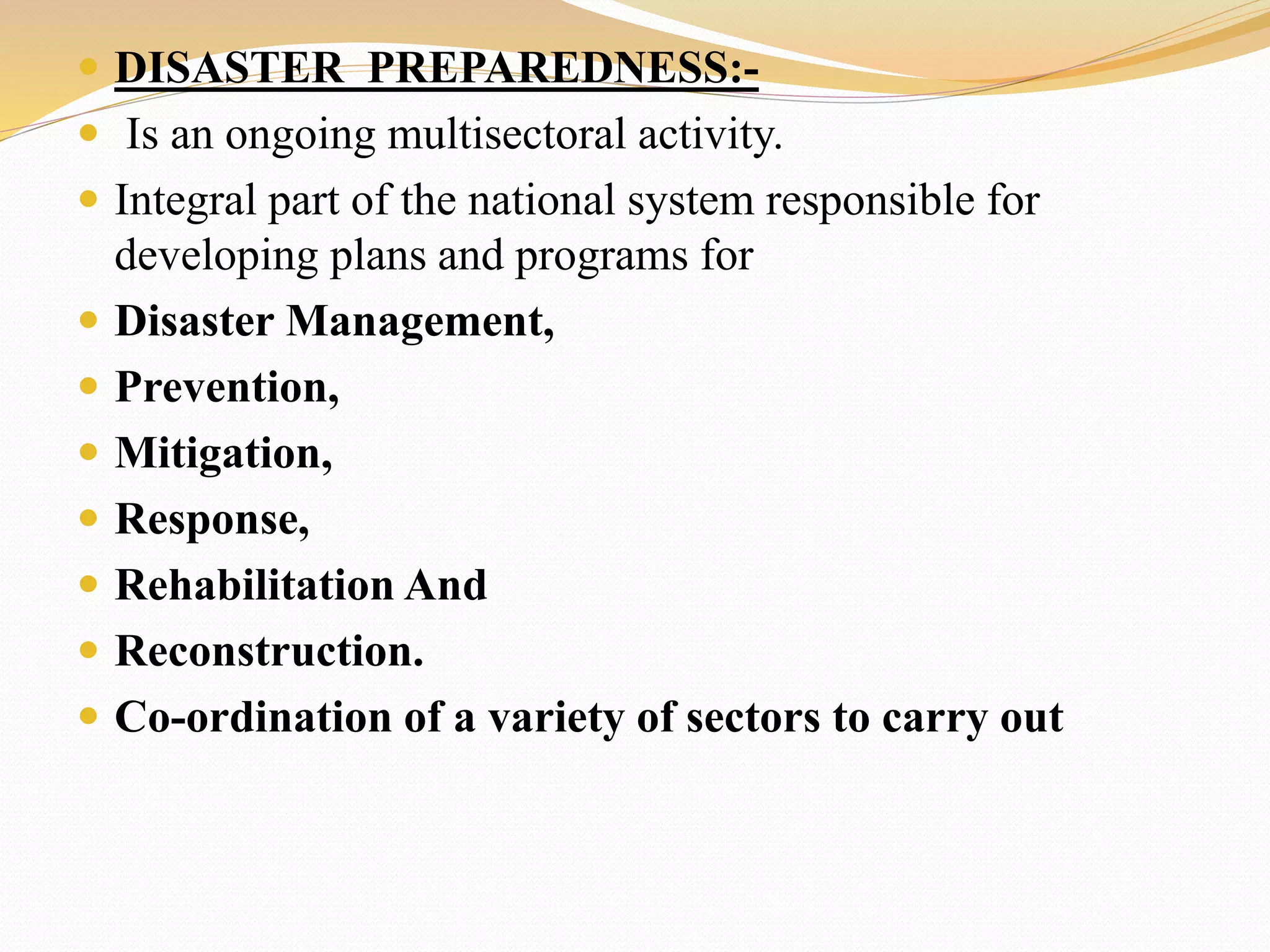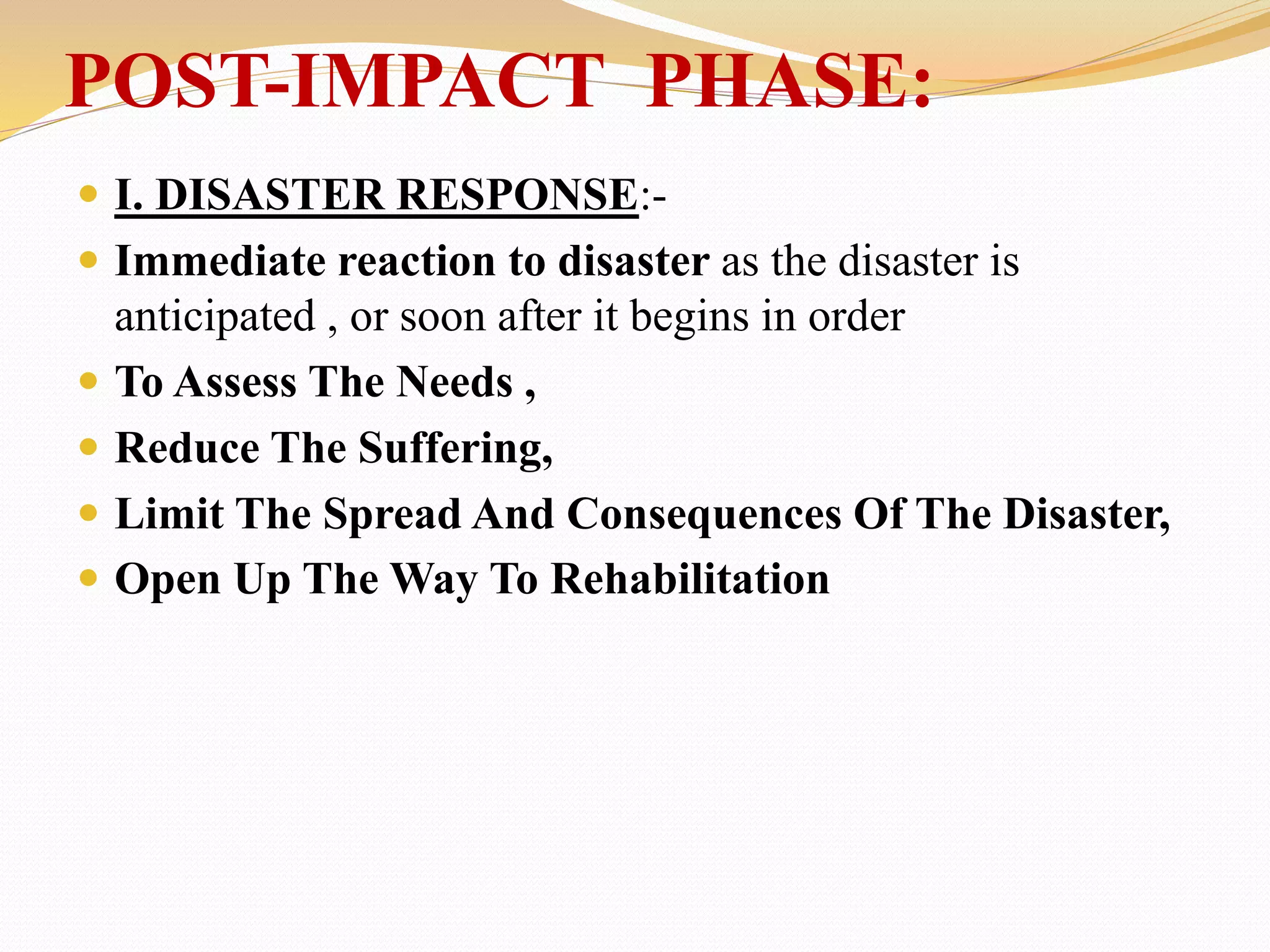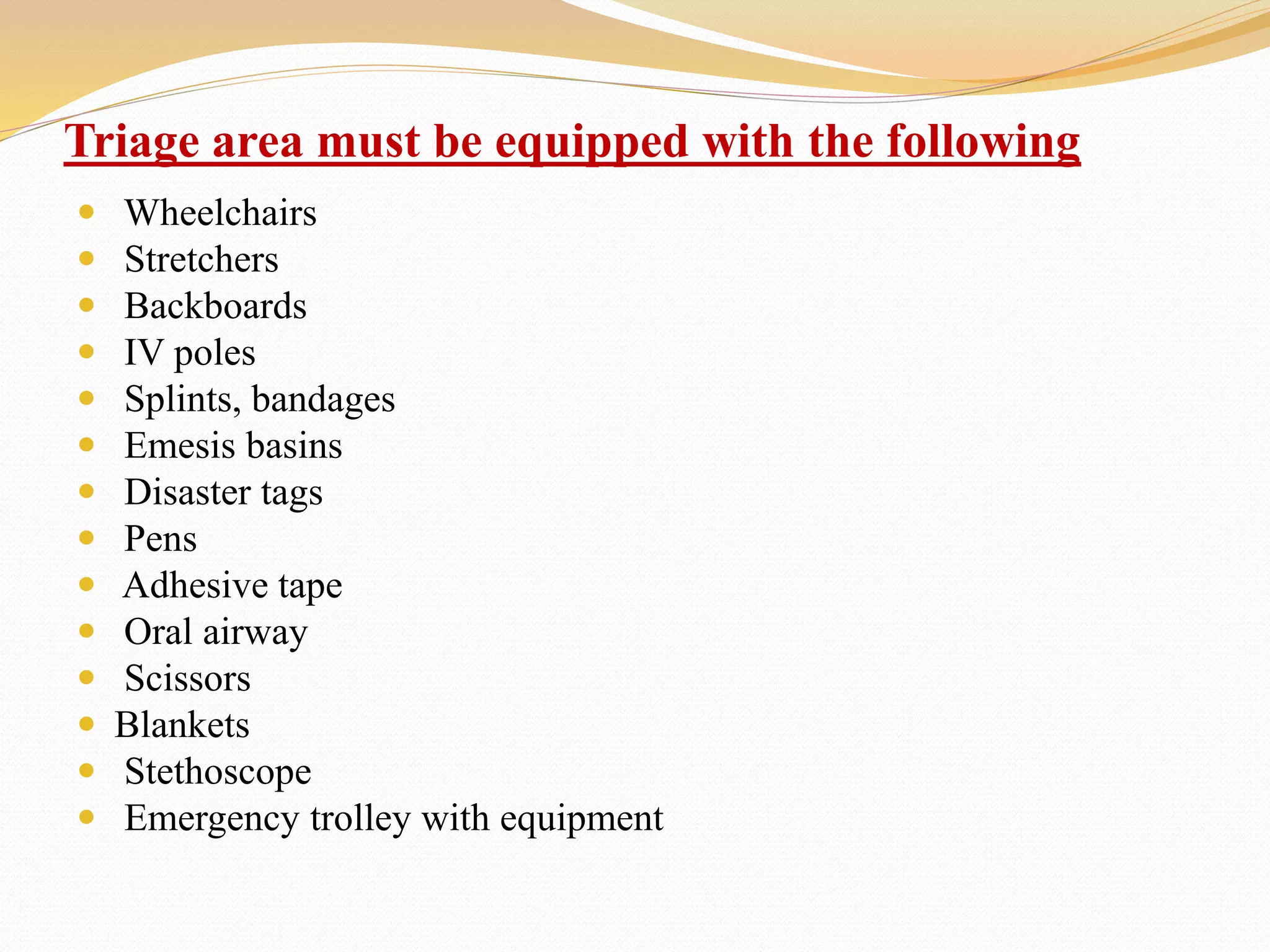The document defines disasters and outlines the key roles and principles of disaster nursing. It discusses different types of disasters including natural and man-made disasters. The phases of a disaster are described as pre-impact, impact, and post-impact phases. Key roles of nurses in disasters include assessing health needs, establishing priorities and objectives, identifying health problems, determining resource needs, and collaborating with other agencies. The document also covers disaster planning, organizing response systems, and the major roles of nurses throughout the different phases of a disaster.
